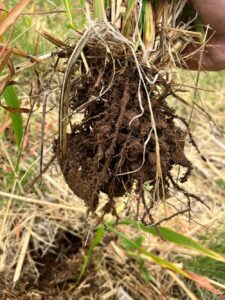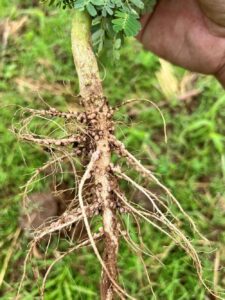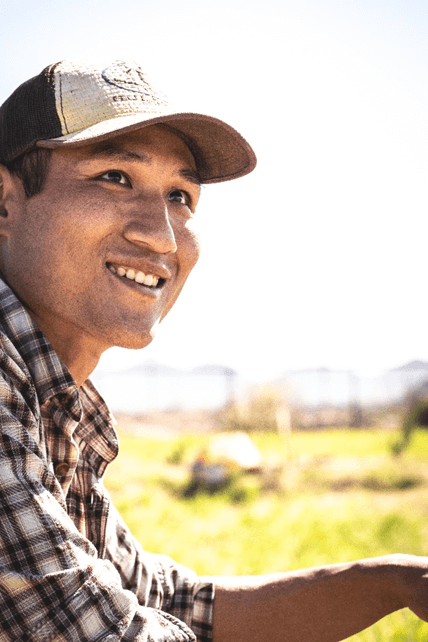Agriculture in Arizona accounts for 76% of the total water utility. Most farmers rely on tillage to control weeds and reduce compaction on heavy clay content (up to 55%) and large amounts of flood irrigation is the common practice to water the crops in our desert climate. Under these management practices, seeds are generally germinated on bare soil surfaces that are prone to significant wind erosion and surface water evaporation. As the drought continues, it is to be expected that the amount of water available for farming in Arizona will be dramatically reduced and Arizona ag practices will have to change.

Cover crop including mung beans, Red Ripper cowpeas,pearl millet, teff grass, sorghum sudan, German millet, Nitro radish, black oil sunflower, Baldy safflower, Mancan buckwheat, brown flax.
Oatman Flats Ranch, a 650-acre regenerative farm in southern Arizona, has gone on a different journey for our land management and food production in one of the driest and the hottest places on the planet (our annual rainfall is less than 5 inches!). On our irrigated cropland, we are growing low-water use, premium baking wheat instead of high-water usage alfalfa, which is the No.1 commodity crop in Arizona. Every pound of wheat we grow conserves approximately 700 gallons of water in the Gila River aquifer compared to other commodity crops grown in our region, like alfalfa and cotton. Oatman Flats is also committed to incorporating summer cover crops, using low to no tillage, and no chemical sprays. We use regenerative practices to focus on the health of people and the planet, but challenges arise when dealing with our high clay content soil and high alkaline water.
There is no doubt that cover crops and reducing tillage can help stabilize soil physical structure and improve water retention. However, to unlock nutrients and reduce soil salinity when flood irrigation is applied, the answer is not that straight forward. Everyone talks about the importance of increasing soil organic matter but during regenerative transition on a land where biological activity is low and soil decomposition occurs slowly, biomass cannot be quickly converted into soil organic matter. The acceleration of soil microbial activity became one of our first and most important tasks and we knew that keeping a living root in the soil as often as possible would be crucial. There are few reasons why living roots are important:

Signs of fungal hyphae on root exudates
- Roots provide the habitat for much of the soil microbiological life and the carbon-rich root exudates provide their food and energy.
- Roots create channels for air, water, and energy to exchange between the above-ground world and the below-ground world.
- Roots support the living organic biomass (plants), which protect the soil, provide energy through photosynthesis and build the soil.

Nitrogen fixation root nodules on Sesbania root.
Cover crops are one of the best ways to maintain living roots in soil profile during non-cash crop seasons. Cover crop termination is normally done with a chemical spray or roller crimping. When chemicals are used to terminate a cover crop, the chemical often blocks certain enzymes in the plant system and can kill the living roots too quickly, which negatively impacts the microbial community. As a result, the soil ecosystem does not always have sufficient microbial activities to support mineral cycling and unlocking necessary macro and micronutrients to allow the field to have the full potential to support the cash crops in the coming season. For all the above reasons, we choose to use roller crimping methods to terminate cover crops so we can maintain the diverse microbial communities that allow the ecosystem beneath the surface to facilitate and support water, carbon, and mineral cycles. If you grow them (roots), they (microbes) will come.
This article first appeared in the 9th Edition of Green Cover's Soil Health Resource Guide.
Also check out the 11th edition, our latest Soil Health Resource Guide, over 90 pages packed with scientific articles and fascinating stories from soil health experts, researchers, farmers, innovators, and more! All as our complimentary gift to you, a fellow soil health enthusiast!

